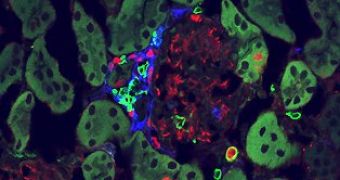A team of researchers from the University of Yale have found a surprising culprit for the autoimmune disease lupus, which also could be a therapeutic target for several other autoimmune diseases.
The team led by Mark Shlomchik, Professor of Laboratory Medicine and of Immunobiology and senior author of the paper, managed to reduce the symptoms of lupus in mice, after eliminating dendritic cells – key immune system cells.
Their work focused on the role played by dendritic cells in lupus erythematosus (SLE) – a chronic inflammatory disease that affects different parts of the body including skin, blood, joints and kidneys.
After knocking out the dendritic cells in lupus-prone mice, the researchers discovered a serious reduction in the symptoms of the disease, but they were also in for a surprise.
Dendritic cells trigger the body's immune response to pathogens, but the part they play in autoimmune disease is not fully known.
However, they are believed to be very important in activating T cells, which along with B cells, represent the two main defenses of the immune system.
The surprise in this case came once the researchers realized that knocking out the dendritic cells in lupus mice did not reduce the activation of pathogenic T cells as they expected.
Instead, the cells vanished from inflamed tissue, and this caused a reduction in symptoms in lupus mice without the dendritic cells.
So, the scientists concluded that dendritic cells might play a localized role in lupus tissue damage and therefore this discovery could make a good therapeutic target for lupus and maybe other autoimmune diseases as well.
Shlomchik said that “dendritic cells could be having the same effects in a variety of other autoimmune diseases, but we will not know until we do similar experiments in other disease models.”
He worked on the paper with Lino Teichmann, Michael Kashgarian, and Michelle Harris-Ols.
This work was funded by the National Institute of Arthritis and Musculoskeletal Diseases and the Lupus Research Institute, and the results were reported in the December 16 issue of the journal Immunity.

 14 DAY TRIAL //
14 DAY TRIAL //